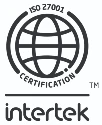Embedded Insurance in 2025: Reshaping Coverage, One Partnership at a Time

By Andy Watts, Business Development Director, INSTANDA
Insurance, as we know it, is evolving— maybe gradually today, but significant changes are on the horizon. The next two decades promise a shift towards a far more integrated, contextual, and personalized approach to coverage. Embedded insurance is right in the center of this evolution — a crucial opportunity that insurers will seek to maximize.
Why is Embedded Insurance Gaining Traction?
Embedded insurance is not a new concept. For years, insurance products have been bundled with non-insurance services, offering customers a seamless way to obtain coverage. However, the focus is now on more ‘personalized embedded insurance’—providing tailored products through non-traditional distribution channels at the exact moment of need.
Personalized embedded insurance brings the product to the consumer, at the exact point of purchase, rather than expecting the consumer to seek it out. This integration is designed to close coverage gaps by recommending personalized insurance products precisely when and where they are most relevant.
Additionally, modern technology facilitates end-to-end business processes, which cross organizational boundaries to create more efficient ways of distributing products exactly at the point of relevance.
The Potential Scale of Embedded Insurance
The numbers surrounding embedded insurance underline its enormous potential. Business analyst Simon Torrance predicts the P&C embedded insurance market could grow to an astounding $722 billion USD in Gross Written Premiums by 2030.
A study conducted by Polly, an embedded insurance marketplace for US auto dealerships, also shows that 81% of Millennials and Gen Z consumers would prefer to buy insurance at exactly the same time as their vehicle purchase. This is really quite telling.
P&C Insurers who fail to act risk being left behind in the push towards more accessible, partnership-based consumer-centric solutions.
Why Embedded Insurance Matters for Insurers
Embedded insurance is reshaping the way insurance carriers think about distribution, customer relationships, and product design. Here’s why it’s a gamechanger for the industry:
1. Meeting Customers Where They Are
As INSTANDA’s Director of Life & Health, Will Wood discussed in his recent article on customer-centricity, the next generation of consumers expects to access services and products quickly and effortlessly. Having grown up in a digitally connected world, they demand insurance offerings that match the seamless online experiences they’re accustomed to. Embedded insurance answers this call by integrating products into existing purchase journeys.
2. Reducing Coverage Gaps
Despite having access to a wide range of products, many consumers still lack adequate coverage. Embedded insurance closes this gap by proactively suggesting relevant insurance products at key points in the customer’s interaction with another service or product.
For example, as covered within our 2024 Global Report, Aventum (one of INSTANDA’s clients) offers insurance at the point of purchase for customers booking West End Shows, where adverse weather conditions prevent them from traveling. In specific scenarios, the customer is refunded since they purchased insurance for a specified peril at the time of their ticket purchase.
3. Enabling Usage-Based Insurance
A significant advantage of embedded insurance lies in its episodic, usage-based nature. For instance, consumers can purchase cyber insurance specifically for vacation travel or personal health coverage during fitness boot camps. This flexible approach aligns with how modern consumers view their needs.
4. Unlocking Efficiency and Scale
Integrating tailored offerings into partner ecosystems opens vast new markets, enabling insurers to scale without incurring significant costs. This capability is particularly advantageous for high-volume and low-value products—opportunities previously prohibitive due to cost issues.
Challenges and Considerations
Embedded insurance is not without its challenges. Successfully navigating this space requires insurers to address several critical factors.
Technology Modernization
Inherent systems are one of the biggest barriers to embedding insurance at scale. Many insurers operate on monolithic platforms that are ill-suited to the flexibility and speed required for personalized embedded insurance. Moving to an API-first, modular solution, such as INSTANDA, offers the agility needed to integrate with external partners and support the dynamic nature of embedded products.
To truly thrive, insurers have the option to thin out their existing platforms, replacing heavy, outdated systems incrementally while wrapping innovative technologies around them. This approach enables smoother transitions and helps divert resources to experimentation and scaling. Most importantly, the fast-moving incremental approach provides a quicker way to realize benefits, which helps fund long-term transformation.
Trust and Consumer Confidence
Trust remains a fundamental barrier in embedded insurance adoption. Consumers need to feel assured that the embedded insurance product comes from a credible and reliable source, and that value is being provided. Building long-term partnerships with reputable distribution channels is crucial to easing consumer concerns. For those companies that want to protect a hard-earned reputation, providing appropriate solutions that give value should be more important than chasing short-term additional revenue.
Regulation and Data Ownership
Navigating the regulatory landscape and establishing clear data ownership protocols are critical. Embedded insurance often involves multiple stakeholders across ecosystems and ensuring compliance while securely handling customer data is paramount.
The Future of Embedded Insurance
Embedded insurance holds immense promise, particularly in the P&C space. Research suggests this market could grow by up to six times its current size within the next five to seven years. Insurers, distributors, and technology providers should act now to lay the groundwork for this transformation.
The winners in this space will be those able to strike the balance between embedding their products seamlessly and maintaining their brand identity. Beyond scaling, success lies in finding partners with shared values, investing in agile systems, and staying attuned to evolving customer expectations.
The Role of Technology as an Enabler
Technology is the backbone of this shift. For example, INSTANDA empowers insurers to move faster by providing fully configurable, API-driven solutions that allow seamless collaboration with external partners.
By adopting agile systems, insurers can test, learn, and iterate their embedded strategies in a safe and modular way.
After all, today’s experiments, at some point, become tomorrow’s business. Insurers who adapt their strategies and technologies now stand to lead the industry into a new era of customer-centricity, efficiency, and growth.
Contact us today and discover how INSTANDA can help you create scalable, customer-focused solutions for the modern insurance landscape.





